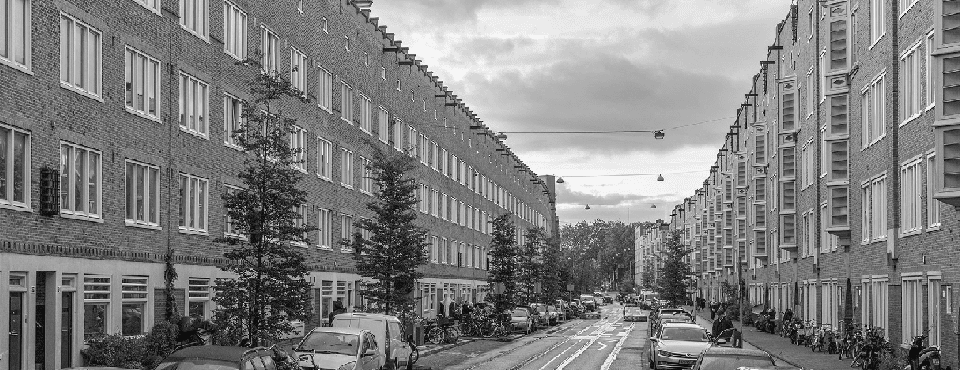
Higher parking prices reduce traffic congestion
Higher parking prices lead to a reduction in traffic congestion in Amsterdam. This is shown in recent research by Francis Ostermeijer, Hans Koster, Jos van Ommeren and Leonardo Nunes of the Vrije Universiteit. They find that the sharp price increase in 2019 has led to a 9% decrease in the number of paying policy parkers. Parking demand has decreased by about 17% and the number of kilometres driven by 2.5%. Parking policies are thus an effective policy measure to make cities more car-free.
In canal district and most of Amsterdam’s historic neighbourhoods, there is very little space for cars. Therefore, in April 2019, the municipality of Amsterdam implement a parking price increase of 65% to reduce traffic in the centre of Amsterdam and make the city more ‘car-free’. The price is now €4.22 per hour on average. This increase varies greatly from neighbourhood to neighbourhood. In the centre, one pays €7.50 per hour, making Amsterdam the highest rate in the world.
In cooperation with the municipality of Amsterdam, researchers from the Vrije Universiteit made a detailed analysis based on more than 80 million parking transactions. This shows that the number of parking hours of paying visitors has decreased by about 17%. About half of this decrease can be attributed to visitors parking for shorter periods and the other half to visitors no longer parking within Amsterdam. Parking revenues for the municipality have increased by about 40%.
What does this mean for on-street parking demand? Most parking spaces are occupied by residents with a parking permit and paying parkers only contribute a small part to the total parking pressure. The decrease in overall parking demand is therefore estimated at 1.7%.
The study further shows that about a quarter of all trips by car within Amsterdam can be attributed to visitors that do not have a permit. The other three quarters of trips are made by residents, cabs, etc. who do not pay for parking, or pay very little. So you would expect the decrease in travel flows due to the price increase to be relatively much smaller than the decrease in the number of paying parkers. That is exactly what the data shows. Based on traffic counts, it appears that the number of kilometres travelled has decreased by about 2.5%. Especially in the evening rush hour, traffic is significantly reduced.
An increase in parking fees is therefore an effective way to reduce parking demand and traffic in the city and is in line with the Agenda Amsterdam Autoluw of January 2020. An advantage of the pricing policy is that it is easy to implement and the space that is freed up by the removal of parking spaces can be used for something else. Examples include green spaces, wider sidewalks (as realised in PC Hooftstraat) or outside terraces for the hospitality industry (for example, along the canals in the city centre).
Despite its effectiveness, a further increase in parking rates for visitors does not seem preferred, as Amsterdam now has the highest parking rates for visitors in the world and most parking spaces are used by residents. Previous research has shown that more expensive resident parking permits lead to less car ownership. However, increasing the price of resident permits is politically very sensitive.
Amsterdam wants to be and remain a liveable city and parking policy seems to play a crucial role in this. On the one hand, liveability can be enhanced by reducing traffic through higher parking fees and by transforming parking spaces into public green spaces. On the other hand, there will be critics who argue that Amsterdam must also remain an accessible city. Astronomical parking rates that make a visit to Amsterdam by car unattractive are then an issue.
